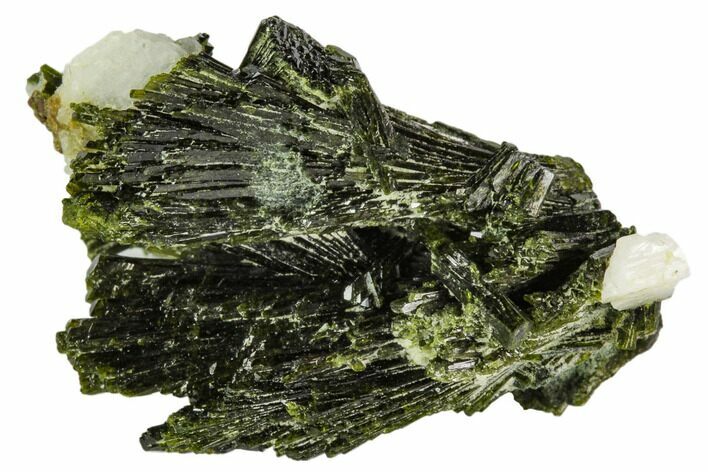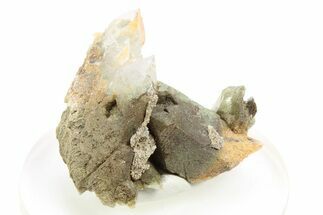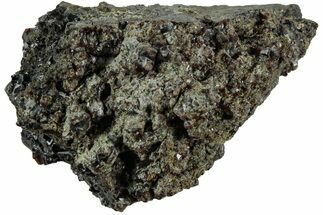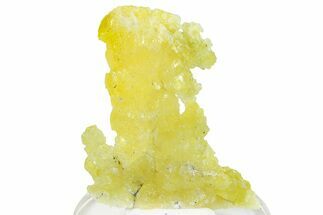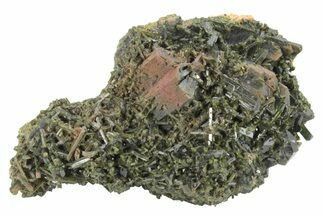This Specimen has been sold.
1.5" Epidote Crystal Cluster with Adularia - Pakistan
This is a cluster of dark green epidote crystals in fan shaped aggregations that's associated with white adularia crystals. The specimen was collected from Balochistan, Pakistan.
About Epidote
Epidote is a striking and often green mineral known for its complex crystal structure and vitreous luster. It is a calcium aluminum iron silicate that commonly forms in metamorphic rocks, particularly in regions that have undergone low to medium-grade metamorphism. The color of epidote typically ranges from pistachio green to dark green, although it can occasionally appear yellowish-green or even brown due to varying iron content.
Epidote crystals can appear in prismatic, slender forms or as aggregates, and they often exhibit striations along their length. The mineral’s translucent to transparent appearance and high refractive index give it an attractive, glassy shine.
It is commonly associated with minerals such as quartz, feldspar, and garnet, often forming in metamorphic rocks like schist and gneiss. It can also be found in skarn deposits alongside minerals like calcite, diopside, and amphiboles. These associations can provide insights into the geologic history and metamorphic conditions of the region. Epidote is found in locations worldwide, with notable sources including Austria, Norway, Pakistan, and parts of the United States. Collectors prize epidote for its unique green hues and well-formed crystal clusters.
Epidote is a striking and often green mineral known for its complex crystal structure and vitreous luster. It is a calcium aluminum iron silicate that commonly forms in metamorphic rocks, particularly in regions that have undergone low to medium-grade metamorphism. The color of epidote typically ranges from pistachio green to dark green, although it can occasionally appear yellowish-green or even brown due to varying iron content.
Epidote crystals can appear in prismatic, slender forms or as aggregates, and they often exhibit striations along their length. The mineral’s translucent to transparent appearance and high refractive index give it an attractive, glassy shine.
It is commonly associated with minerals such as quartz, feldspar, and garnet, often forming in metamorphic rocks like schist and gneiss. It can also be found in skarn deposits alongside minerals like calcite, diopside, and amphiboles. These associations can provide insights into the geologic history and metamorphic conditions of the region. Epidote is found in locations worldwide, with notable sources including Austria, Norway, Pakistan, and parts of the United States. Collectors prize epidote for its unique green hues and well-formed crystal clusters.
Adularia is a variety of feldspar that had the chemical formula KAlSi3O8. It is found most often as colorless to white aggregations within metamorphic rock, usually within cavities of crystalline schists. Adularia crystals are commonly twinned, glassy and prismatic in structure, and in some cases they display opalescent characteristics. Adularia is very similar to orthoclase, even bearing the same chemical formula, but it has a different crystalline structure and reacts differently to various tests. Its name comes from its type locality: the Adula Massif in the Alps of south-central Switzerland.
SPECIES
Epidote & Adularia
LOCATION
Balochistan, Pakistan
SIZE
1.5 x 1"
CATEGORY
ITEM
#111970
 Reviews
Reviews



